Do these mysterious signals suggest aliens are trying to contact us?

From the dark side of the moon to the eternal vastness of the universe, are we on the verge of contact?
On the night of August 15, 1977, the Big Ear telescope – located at Ohio State University, USA – received a strong radio signal from the Sagittarius constellation, which would eventually create radio astronomy history. Constructed in 1961 and functional since 1963, the Big Ear radio telescope was part of the Search for Extra-Terrestrial Intelligence (SETI) project. Since the project began in 1973, it ended up being one of the longest running SETI projects ever, until it was shut down in 1995. Astronomer Jerry Ehman who had volunteered in analyzing the large amounts of data – collected from extragalactic radio sources – was in for a surprise while he was studying the data on printed perforated paper. The radio data was so startling for him that while encircling the anomalous data points, he commented “Wow!” on the side. This is how it popularly came to be known as the “Wow! Signal”.
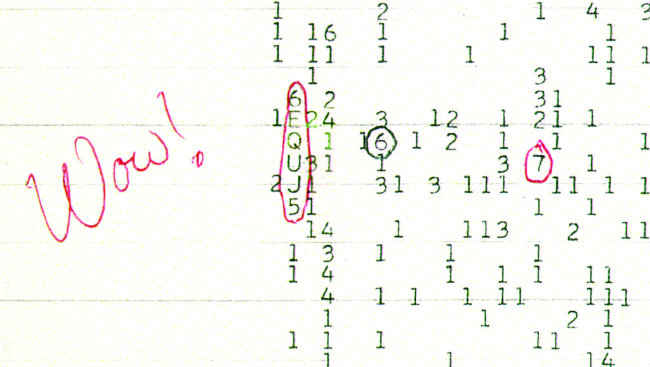
The Wow! Signal sequence
Fast forward to the present time, and we’ve received a lot of such mysterious signals from the infinite corners of the cosmos. Although we are yet to witness something as strong and spectacular as the Wow! Signal, the source remains a mystery to this date. Astronomers have been able to roughly pinpoint the galaxies and constellations from where these unknown signals have originated. But we haven't succeeded in decrypting these signals (or have we?) if at all we consider it with High Hopes that these mysterious signals are actually attempts to make contact by extra-terrestrials. Or were they mere radio bursts emitted from exploding stars or other celestial bodies and that’s what scientists and astronomers are trying to review.
But what are these signals? How are they different from the ones being transmitted across the planet? Who takes responsibility of reviewing through the endless number of signals received by our telescopes and satellites? We try to delve deeper into these questions.
All about space signals
We’ve been using radio waves operating at different frequencies primarily as a channel for communication within the planet and beyond. When it comes to interstellar communication, we’ve long known that electromagnetic waves is the best medium to adopt because of its resistance to any form of interference and dispersion. Since this is the universally accepted form of communication we already use, our best opportunity to establish contact with any extra-terrestrial source had to be accomplished using radio waves.
Emitting radio signals at unknown frequencies will definitely go in vain hence, a favorable frequency region had to be decided. A paper titled “Searching for Interstellar Communications” published in 1959 by Cornell physicists Philip Morrison and Giuseppe Cocconi speculated this particular frequency region. Every single body in the universe consisting of mass generates radio waves, including us (human beings). Hydrogen is the most abundant element found in the universe, implying that most of the inhabitants must be familiar with it. Neutral Hydrogen emits radio waves at a frequency of 1,420MHz. Assuming an equivalent level of intelligence, extra-terrestrials trying to establish contact with fellow inhabitants of the universe should have developed receivers capable of picking up signals in this range. Although a signal from a source might originate at the speculated frequency region, it could suffer attenuation while traversing due to several factors. To eliminate these factors, radio waves around the 1,420MHz region (plus or minus 300 KHz) is to be considered as well. The paper was published almost a decade before we detected the Wow! Signal, which gave the paper more credibility. The reason was the two different reviewed data values of the signal’s frequency – 1420.36MHz and 1420.46MHz – was close to the speculated one.
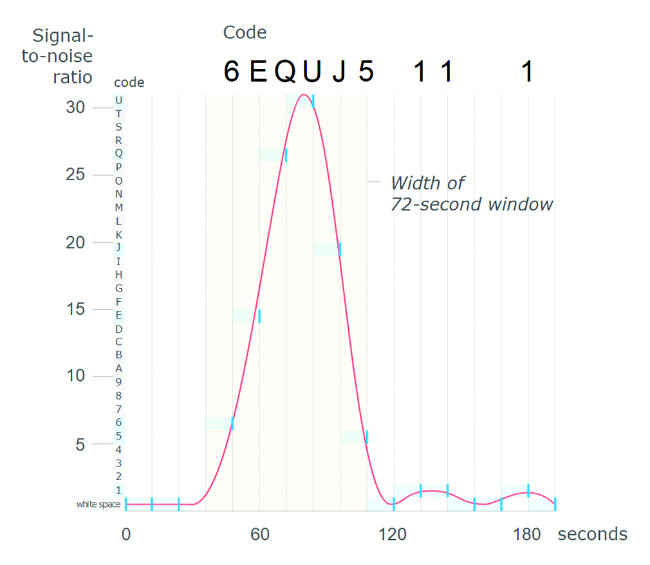
The Wow! Signal lasted for 72 seconds generating an alphanumeric sequence “6EQUJ5” denoting the intensity variation of the radio signal. One of the instances in the Wow! Signal was almost 30 times stronger than normal deep space.
While trying to collect deep space signals, it is also necessary to eliminate known sources of signals which are not extra-terrestrial in nature. As already mentioned above that everything in the universe emits radio waves, sources such as planets, asteroids, satellites, aircrafts, space crafts and even ground-stationed transmitters have to be ruled out. In scientific terms, ruled out doesn’t imply eliminated but something which has a low probability. Consider them as a checklist of sort including external factors such as gravitational lensing (a phenomenon that causes signals to bend around objects resulting in a brighter image) and interstellar scintillation (the twinkling effect). If these factors are ruled out, then the most probable cause of the deep space signal has to be from an extra-terrestrial source.
The paper also talked about the type of star systems we should be targeting to detect incoming signals from possibly intelligent extra-terrestrials. The variables that resulted in the formation of life on our planet and solar system are immensely high and it’s still difficult to come up with a reliable set of parameters. Since it’s already known that our Sun is capable of sustaining life, as we know it, there’s a better probability of discovering life on other sun-like stars in the universe.
SETI
Most of the research and study to evaluate these mysterious signals are being led by SETI. A highly popular and old non-profit organization, the SETI institute was incorporated in 1984. It mainly consists of three primary centers – Carl Sagan Centre, Centre for Education and the Centre for Public Outreach. The Carl Sagan Centre is dedicated to studying life in the universe, the Centre of Education deals with astronomy, astrobiology and space science while the Centre for Public Outreach takes care of the institute’s general science radio show and podcast – Big Picture Science, and “SETI Talk” which is their weekly series. Headquartered in Mountain View, California, the institute is privately funded whereas its astrobiology research might be funded by NASA, the National Science Foundation, and other grants.
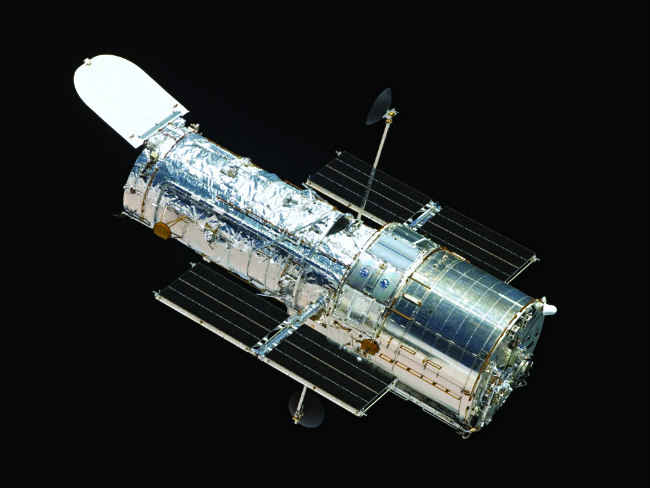
The Hubble Space Telescope is used for SETI research
Detection of signals are carried out using ground-based telescopes located at several observatories across the USA. The main instruments used includes the ground-based Allen Telescope Array near San Francisco. They also employ ground-based optical telescopes like the Shane telescope at Lick Observatory, the W.M. Keck telescopes and IRTF in Hawaii, and the Very Large Telescopes in Chile. Research is also carried out using space telescope facilities such as the Hubble Space Telescope, the Spitzer Space Telescope, and the Herschel Space Telescope. Soon, we might also see SETI taking advantage of the upcoming James Web Space Telescope.
Along with searching the universe for extra-terrestrials, SETI also consists of a project called Active SETI (Active Search for Extra-Terrestrial Intelligence) to send messages to intelligent life forms through radio signals, including physical messages. It’s also called (METI) Messaging to Extra-Terrestrial Intelligence but the distinction lies in SETI doing only the searching of messages whereas METI is more concerned with the creation of messages. We’ll be talking more about Active SETI in the last section of this article.
Recent developments
So, what has suddenly piqued our interest into one of the most significant events in radio astronomy? Why is the discussion of deep space signals coming back to life? For starters, this year we’ll be celebrating the 40th anniversary of the Wow! Signal while anticipating a similar event of such a scale to occur once again. Radio astronomers have been riddled with mysterious short bursts of radio waves or fast radio bursts (FRB) coming from a particular source, for over 10 years since they were discovered in 2007. Fast radio bursts are sudden high-energy bursts of an astrophysical phenomenon whose origins are unknown. These bursts last for only a few milliseconds and their pulse dispersion measures are much larger for sources present in the Milky Way. The energy generated by them is immensely high, close to the amount of energy generated by the Sun in an entire day. Not all of these FRBs are detected since some of them are so quick that the current devices have a hard time picking them up. Early 2015 is when we actually were quick enough to witness them happening in real time.
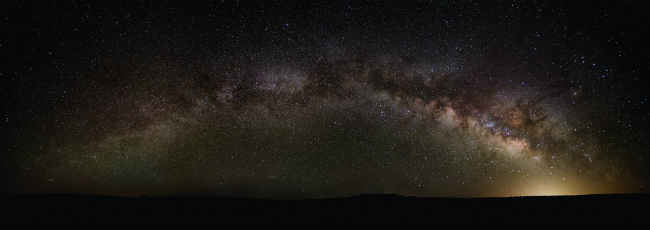
FRBs have been detected to be originating not just from the Milky Way but from across the universe
There has been a total of 17 FRBs among which one of the signals has been repeating in a sporadic pattern. The first 10 of these signals were detected in March 2016 but these bursts had actually occurred in May and June 2015. Among the 10, six of them were recorded by the Arecibo radio telescope in Puerto Rico and four of the remaining signals were detected over the course of the next month. Due to a discovery found in older data, the team looked further back and found that a signal was first detected in 2012, making the total count of 11. These FRBs were the first ever ones to be recorded coming outside the Milky Way since the rest of them originated from our galaxy itself. The reason why these particular FRBs are being discussed as a possible extra-terrestrial attempt is the repetitive nature of the signal. The challenge imposed by these mysterious signals is discovering what they really are. The signals could be emitted from new-born stars with huge magnetic fields (magnetars), supernova remnants, or in fact aliens trying to contact us. Recently, a team of researchers from McGill University in Canada discovered six more such radio bursts originating from the same source, bringing the total to 17. Five of the latest signals were detected with the Green Bank Telescope at 2GHz, and one at 1.5GHz with the Arecibo Observatory. The current hypothesis for the source of the FRBs originating from the Milky Way is the short-lived radio energy emitted during the collision of two neutron stars that results in the formation of a black hole. But since the radio bursts in FRB 121102 have displayed a repetitive pattern, the current hypothesis doesn’t hold. Instead, the new hypothesis suggests a newly formed neutron star rotating with enough power to emit strong pulses at intervals.
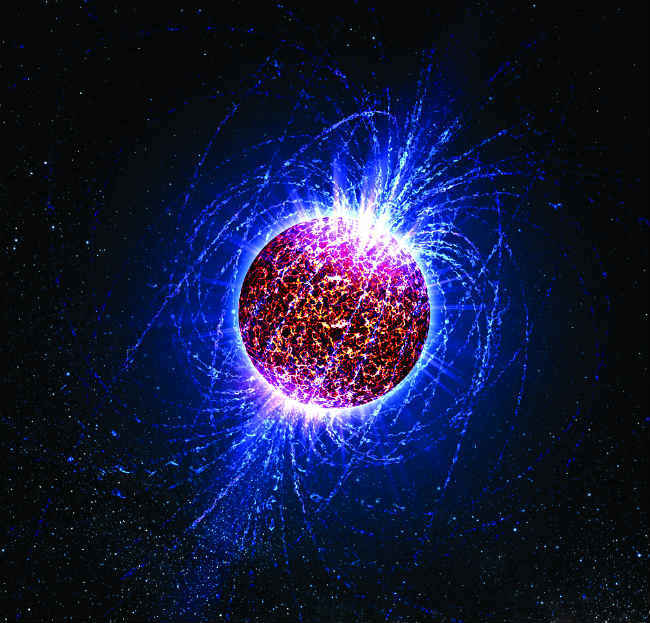
Neutron stars emit high-energy radio waves that can be mistaken as fast radio bursts
A pair of astronomers Ermanno Borra and Eric Trottier from Laval University published a paper in Oct 2016, covering the analysis of 2.5 Million stars present in the Sloan Digital Sky Survey trying to detect spectral modulations and observe whether they follow a particular pattern. The research mentioned mysterious signals coming from 234 stars that can have origins from an extra-terrestrial intelligent civilization. Just like the Wow! Signal, the theory suggests that aliens sending these signals are one of the possibilities being considered and not the only one.
This implies that we are definitely improving on discovering or getting as close as we can to determining the point of origin of these signals. It’s also clear that we are a long way from determining what these bursts are and what’s creating them. For now, efforts are being made to detect more of such FRBs, no matter where they are originating from, and study them. While research is conducted on a wider dataset, we might soon be able to accurately pinpoint the source and even determine what caused them. And maybe, just maybe, if extra-terrestrials are trying to make contact, we would one day be able to establish communication between us and them.
Sending a message
Receiving a message from an extra-terrestrial civilization assumes the fact that they are more advanced than us which is why they were able to locate us and transmit their message through the infinite distance of the universe. Along with searching for a technologically advanced civilization in the universe, it’s also essential to broadcast messages. Active SETI as already mentioned is an effort to send messages to aliens, and they have undertaken numerous projects targeted at stars between 17 and 69 light years away from Earth. Among the most notable projects, the Arecibo message was sent in 1974 to the globular cluster M13 which approximately 24,000 light years away and the main intention behind sending this message was to test newly installed equipment. Another important message is RuBisCo Stars sent in 2009 which will be the first message to reach its destination – Teegarden’s star – in 2021. It would have been a shame if we left the Wow! Signal unanswered even if it wasn’t a message in the first place. The Wow! Reply was sent in 2012 celebrating the 35th anniversary of the Wow! Signal and the launch of National Geographic Channel’s new show “Chasing UFOs”.
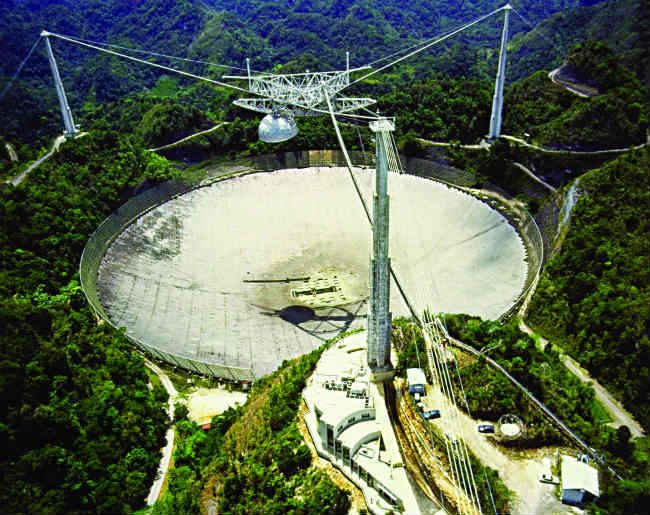
The Arecibo and RuBisCo Stars messages were transmitted from the Arecibo Observatory located in the USA.
But every effort has its setbacks, and Active SETI also faced heavy criticism. Several critics have been against the idea of sending a transmission since it will give away the location of Earth which could be an imminent threat from a hostile alien civilization. Although it’s a genuine concern, many have argued that the advantages of establishing communication with extra-terrestrials far outweigh the dangers.
Returning back to the title or rather question of this entire article. Is there anybody out there? Probably. We have already witnessed a jump in technology in detecting signals and observing deep space. What will be wonderful is at least one of those FRBs actually turning out to be a message from an extra-terrestrial civilization and contacting them in this lifetime.
This article was first published in February 2017 issue of Digit magazine. To read Digit's articles first, subscribe here or download the Digit e-magazine app for Android and iOS. You could also buy Digit's previous issues here.
Abhijit Dey
A Star Wars fan and sci-fi enthusiast. When I'm not playing games on my PC, I usually lurk around the Internet, mostly on Reddit. View Full Profile





